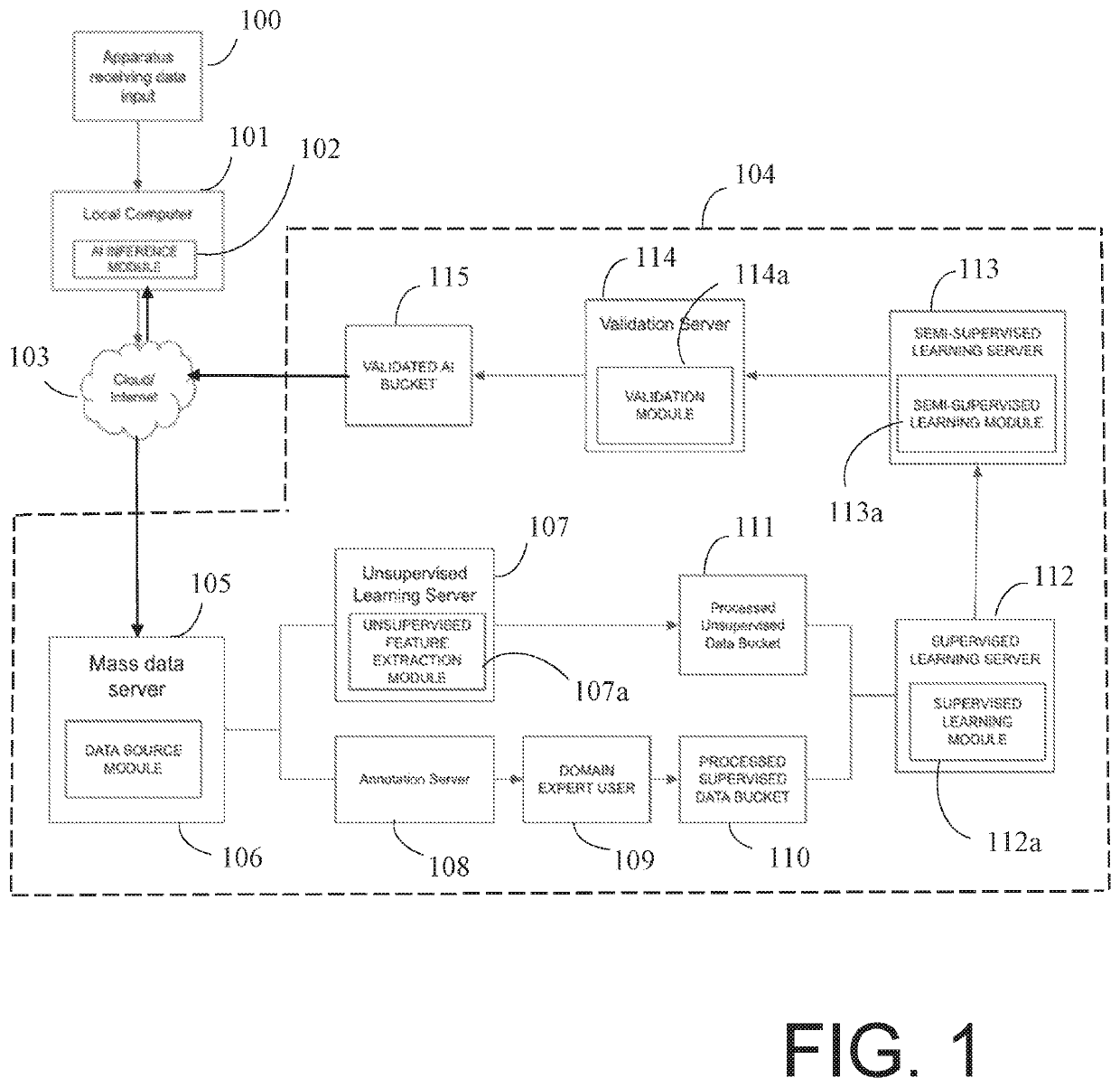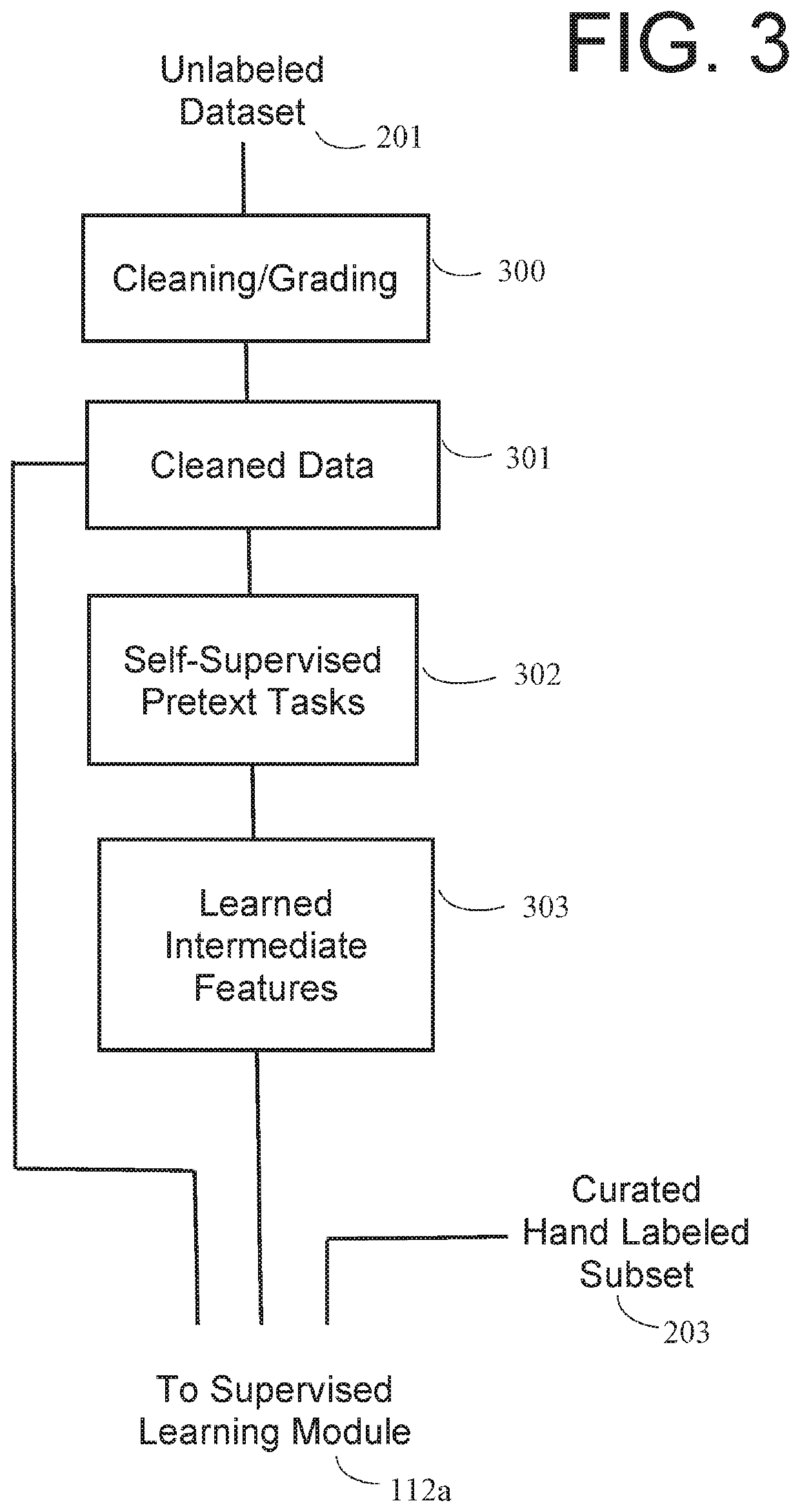Autonomous and continuously self-improving learning system
a learning system and self-improving technology, applied in computing models, instruments, healthcare informatics, etc., can solve the problems of inability to train a machine learning system, inability to obtain sufficient quality labeled data, and inability to obtain large amounts of labeled data, so as to improve detection efficiency and accuracy, improve the detection capability of the learning process
- Summary
- Abstract
- Description
- Claims
- Application Information
AI Technical Summary
Benefits of technology
Problems solved by technology
Method used
Image
Examples
Embodiment Construction
[0031]Referring to FIG. 1, exemplary system 10 constructed in accordance with the principles of the present invention is described. In this disclosure, exemplary system 10 is configured to detect potential abnormalities in a video feed generated during an endoscopy or colonoscopy examination, although the present invention advantageously may be employed in any other endeavor where an autonomous and continually improving self-learning system is desired. In accordance with this exemplary system, apparatus 100, such as an endoscopy or colonoscopy system, generates a video feed for local computer 101.
[0032]The video output generated by apparatus 100 constitutes the input data feed that is analyzed by Artificial Intelligence (AI) Inference Module 102 that executes on local computer 102. Illustratively, if apparatus 100 is a colonoscope, the input data feed to local computer 101 and AI inference module 102 is the stream of video images generated by the colonoscope camera. In one preferred...
PUM
 Login to View More
Login to View More Abstract
Description
Claims
Application Information
 Login to View More
Login to View More - R&D
- Intellectual Property
- Life Sciences
- Materials
- Tech Scout
- Unparalleled Data Quality
- Higher Quality Content
- 60% Fewer Hallucinations
Browse by: Latest US Patents, China's latest patents, Technical Efficacy Thesaurus, Application Domain, Technology Topic, Popular Technical Reports.
© 2025 PatSnap. All rights reserved.Legal|Privacy policy|Modern Slavery Act Transparency Statement|Sitemap|About US| Contact US: help@patsnap.com



